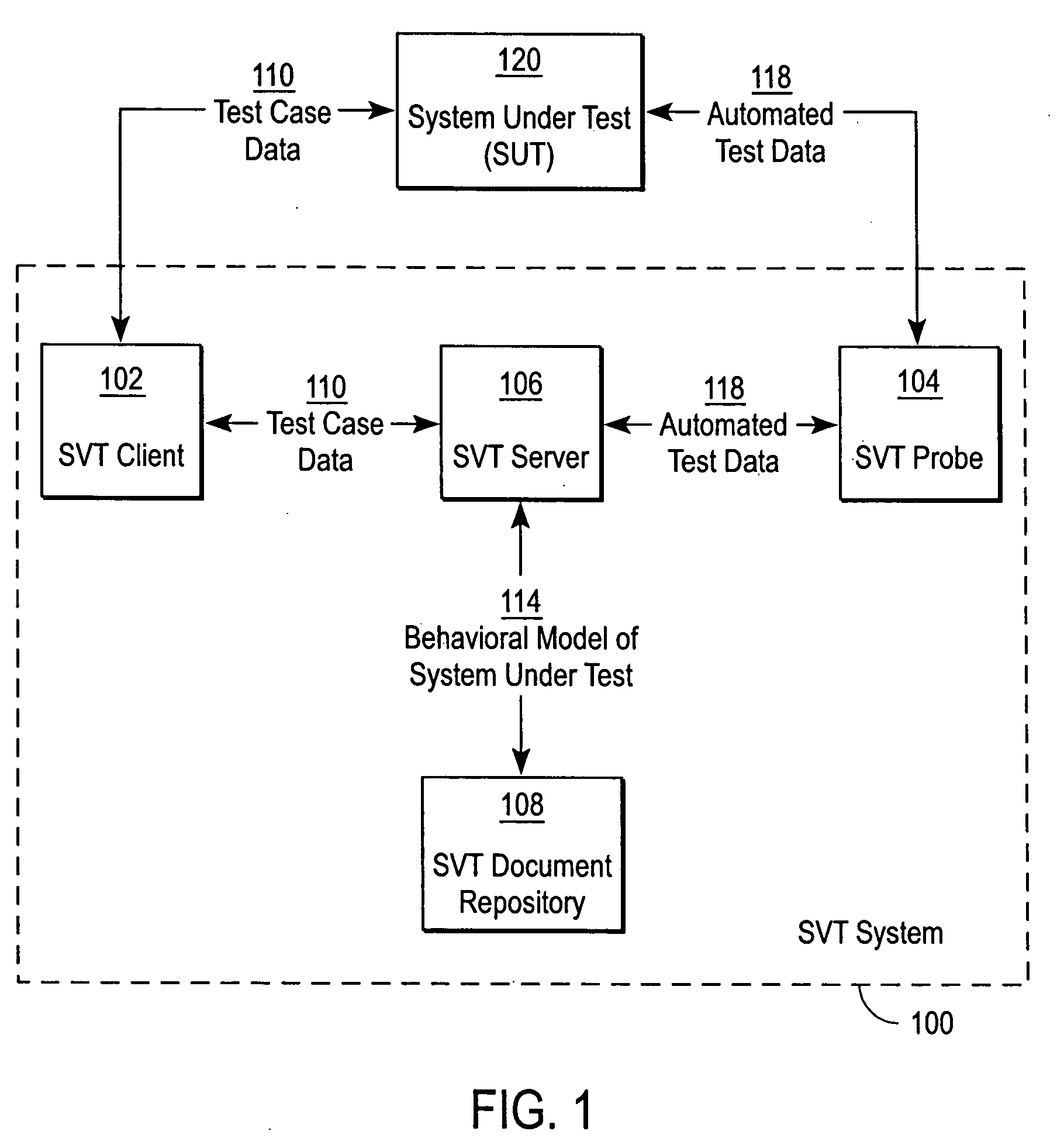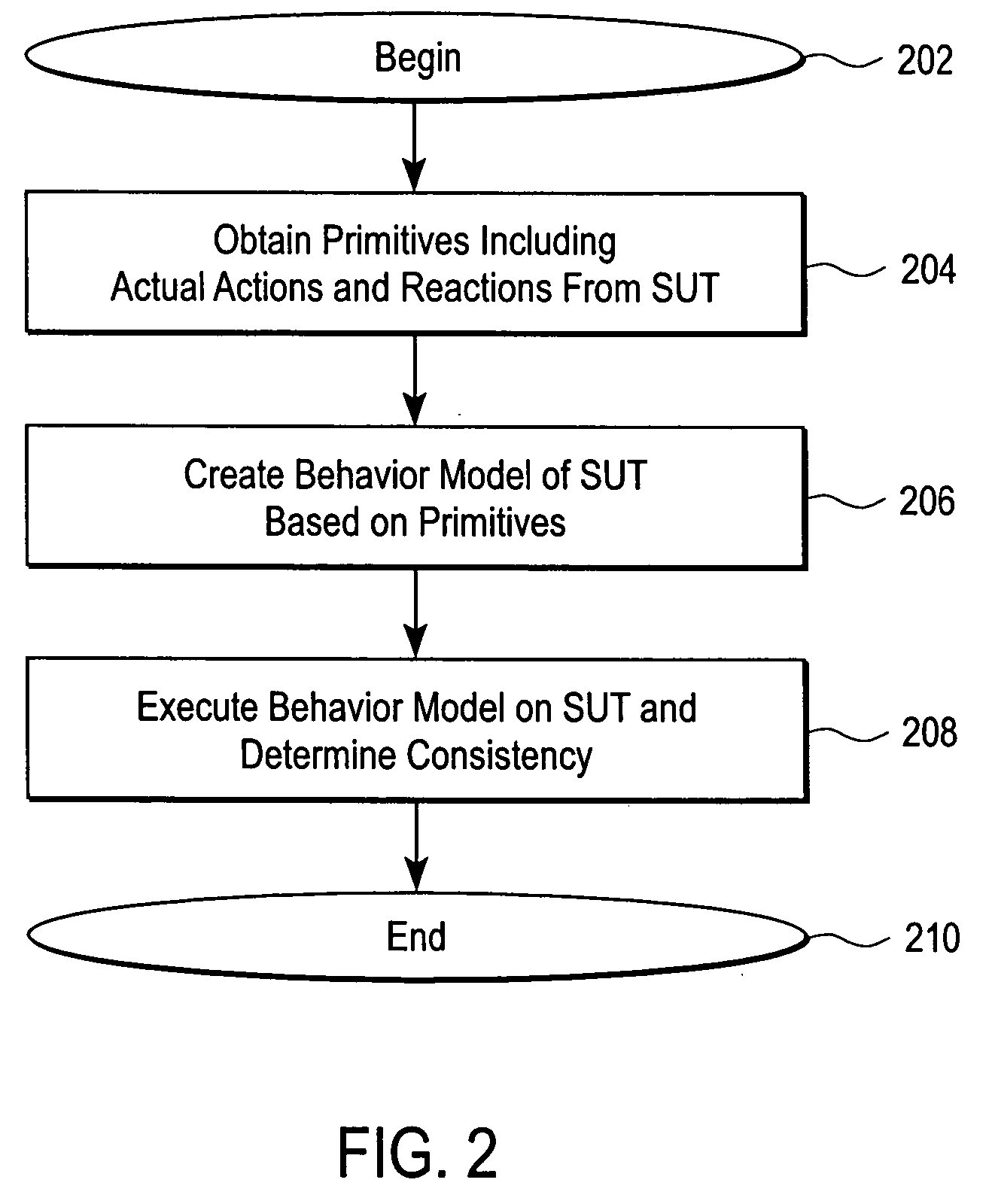System verification test using a behavior model
a behavior model and system verification technology, applied in the field of system verification test, can solve the problems of manual regression testing, high labor intensity, time-consuming, error-prone, etc., and achieve the effect of fewer test escapes and better test coverag
- Summary
- Abstract
- Description
- Claims
- Application Information
AI Technical Summary
Benefits of technology
Problems solved by technology
Method used
Image
Examples
Embodiment Construction
[0026]FIG. 1 is a block diagram illustrating the architecture of the System Verification Test (SVT) system 100 according to one embodiment of the present invention. The SVT system 100 verifies the functionalities of, and assures the quality of, the System Under Test (SUT) 120 according to the SVT process of the present invention. In one embodiment, the SVT system 100 includes an SVT server 106, an SVT client 102, an SVT probe 104, and an SVT document repository 108. The SVT server 106, SVT client 102, and the SVT probe 104 may be separate computers operating within the SVT system 100, and the SVT document repository 108 may be a database running on a separate database server or can also be part of the SVT server 106 itself. The SUT 120 may be any type of hardware devices, such as a computer, a networking device, a router, etc., or can also be computer software running on a computer.
[0027] The SVT client 102 captures data 110 while a test case is performed on the SUT 120. For exampl...
PUM
 Login to View More
Login to View More Abstract
Description
Claims
Application Information
 Login to View More
Login to View More - R&D
- Intellectual Property
- Life Sciences
- Materials
- Tech Scout
- Unparalleled Data Quality
- Higher Quality Content
- 60% Fewer Hallucinations
Browse by: Latest US Patents, China's latest patents, Technical Efficacy Thesaurus, Application Domain, Technology Topic, Popular Technical Reports.
© 2025 PatSnap. All rights reserved.Legal|Privacy policy|Modern Slavery Act Transparency Statement|Sitemap|About US| Contact US: help@patsnap.com



